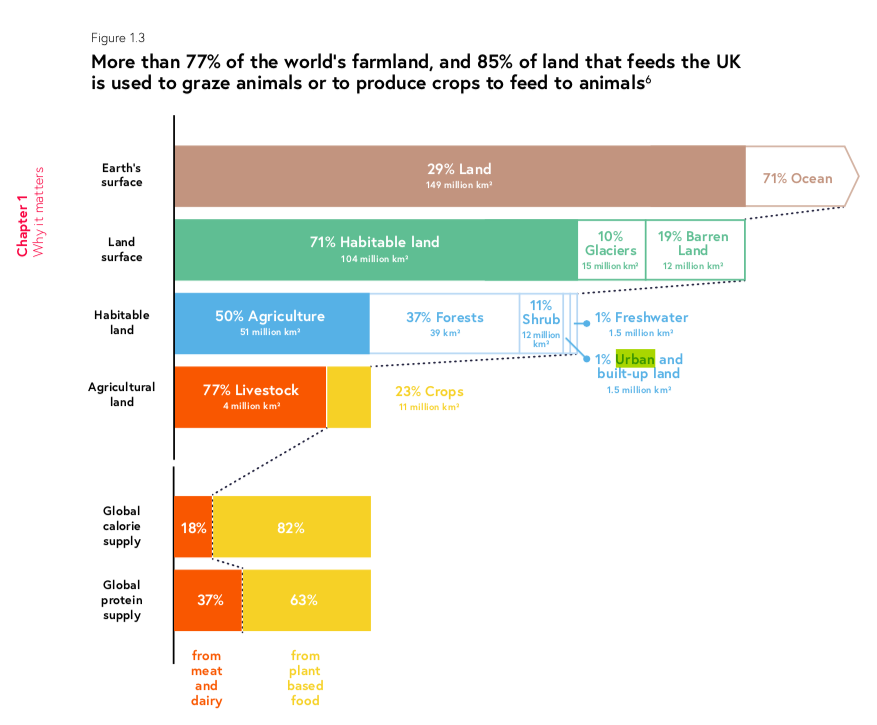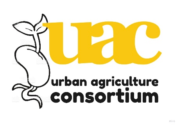The much anticipated National Food Strategy has given us this fascinating overview of land use (below). We can see that 50% of habitable land in the world is given to agriculture and 1% is urban and built up. So straight off the bat this shows us that when we think about transforming urban food systems, we have to talk not about not only spaces within urban areas, but the peri-urban spaces around them, and the bioregions within which they sit. ‘Localisation’ needs to work towards proliferating regenerative food production in these kinds of zones and scales.
As far as I could see through searching the document for key words, the NFS doesn’t say much at all specifically about urban or peri-urban agriculture, though it does talk a lot about nutrition and health equality. By that, it is saying our national food system, in all it’s future diverse forms, must fill the bellies of everyone with good food and eradicate malnutrition, spotlighting a call for renewal of our relationship to real food, where it comes from, and why we must eat certain foods and not others. We’re pretty poorly educated as a nation about the needs and wants of our amazing bodies once food passes beyond the tongue.
Becoming healthy is complex, but it’s also deep in our DNA, that we are designed for wholeness and optimum functioning. Given the chance (and cultural scaffolding) our bodies and minds will move in this direction. (See Knowledge is Power section here).
The NFS also seems to not say much about training and new entrants to farming. This is such a cornerstone of any future strategy, and future economic stability, I’d like someone to tell me what the strategy says about this.
What stood out for you?

